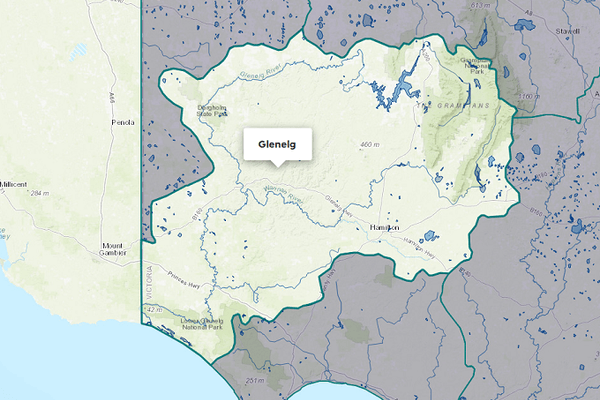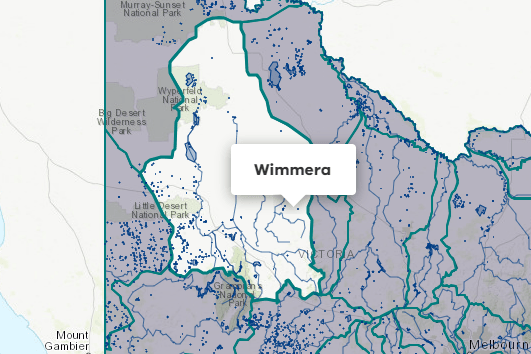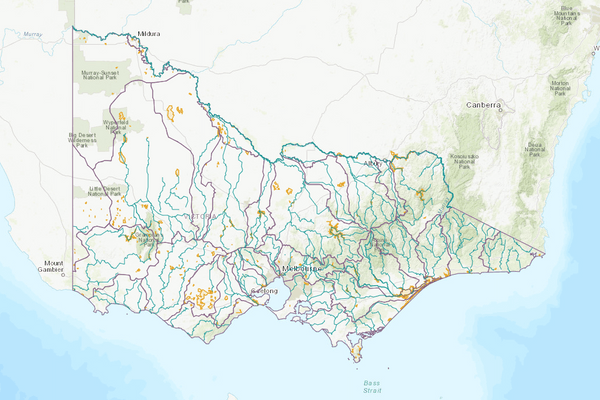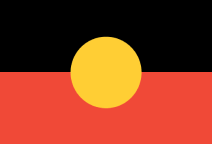About the area
The Millicent Coast basin spans parts of both Victoria and South Australia. The Victorian section of the basin comprises numerous internally draining wetlands located mainly in the south, and several minor waterways which flow intermittently and continue into South Australia.
Groundwater is the most significant resource in the basin.
The basins average annual rainfall ranges from below 400 mm in the north up to above 600 mm in the south.
More information on water management and accounting is detailed in Water explained.
2022-23 overview
Water used
More water was used for consumptive purposes than the previous year.
Climate
Rainfall
In 2022-23, rainfall across most of the Millicent Coast basin was very much above the long-term average and the highest recorded in the reference period (1975 to 2023) around Goroke. This was higher than the previous year when rainfall was close to average.
Figure 1 displays the rainfall received in 2022-23 compared to the long-term average (1975-2023).
Figure 1: Rainfall deciles, Millicent Coast basin
Sourced from the Australian Bureau of Meteorology
River basin water balance
Groundwater taken from the West Wimmera Groundwater Management Area (GMA) is the main source of water supply in the Millicent Coast basin. Information about groundwater licences and use in this area is reported in the West Wimmera Groundwater Catchment.
Water balance table
Limited information is available for surface water availability and use, so a water balance has not been included for the Millicent Coast basin.
Major on-stream storages
There are no major - greater than 1,000 ML - storages in the Millicent Coast basin.
Inflows
Catchment inflow
There is no reliable streamflow data for the Millicent Coast basin. As such, an estimate of the volume of water leaving the basin was not made. As the Victorian Water Accounts estimate catchment inflow as a back-calculation from outflows, an assessment of the available water in the basin - catchment inflow - has not been made. Any surface water not diverted flows to South Australia.
Wastewater treatment plants
Water treated at wastewater treatment plants can be used to supplement water available in the basin.
Information on treatment plants is reported in the water supply local reports for the water corporation responsible for managing the plant.
In this basin, wastewater treatment plants are managed by Grampians Wimmera Mallee Water.
Outflows
Small catchment dams
Water harvested, used and lost by small catchment dams (farm dams) is shown below.
Table 1: Small catchment dams, Millicent Coast basin
Entitlements and compliance
Entitlements provide the basis for how water is shared in the basin.
Entitlement volumes
Rights to water in the Millicent Coast basin are shown in Table 2.
Entitlement volumes represent a maximum volume of water that can be taken in a one-year period. The volume available in a particular year is dependent on the rules for allocating water set out in the entitlement and the seasonal conditions in that year, which can vary. The rules for allocating water under an entitlement differ between entitlements and systems. This affects the ability and likelihood of water being taken in a particular year.
Table 2: Annual entitlement volumes at 30 June, Millicent Coast basin
Available water and take under entitlements
Total water available under entitlements represents the volume of water that was available to be taken by entitlement holders in 2022-23. The volume includes seasonal allocations and net trade into the basin.
Water taken
There was 858 ML taken under entitlements in 2022-23, more than the previous year (209 ML).
Available water and take table
This table shows the volume of available water and the volume taken under entitlements in 2022-23.
More information on available water and take has been detailed in How we account for surface
In 2022-23, more water was taken under entitlements than the previous year.
Table 3: Available water and take under entitlements, Millicent Coast basin
Compliance
Compliance against water entitlements is reported for this basin in 2 areas:
- entitlement issued: that the volume of entitlements issued in a basin does not exceed formal caps, and has not increased without appropriate approvals
- water taken: that the volume of water taken during the year does not exceed the volume considered to be available for consumptive and/or in-stream use during that year.
Total entitlement volume
There was no net increase in the total entitlement volume from the previous year.
Total volume diverted
The total volume diverted under entitlements (858 ML) was within the volume available for the year (5,075 ML).
Water for the environment
Environmental watering sites
There are no environmental entitlements in the Millicent Coast basin, so no active environmental watering occurs.
However, the Millicent Coast basin contains numerous wetlands. The largest waterway in the basin, the ephemeral Mosquito Creek, provides streamflows to support Ramsar-listed wetlands in South Australia, including Bool and Hacks lagoons.
Environmental water reserve
In 2022-23, water for the environment in the Millicent Coast basin comprised all water in the basin not allocated for consumptive use: this water also provides social, recreational and cultural benefits.
Management responsibilities
Management of water in the Millicent Coast basin is undertaken by various parties
| Authority | Management responsibilities |
|---|---|
| Grampians Wimmera Mallee Water |
|
| Wimmera Catchment Management Authority |
|
| Glenelg Hopkins Catchment Management Authority |
|






